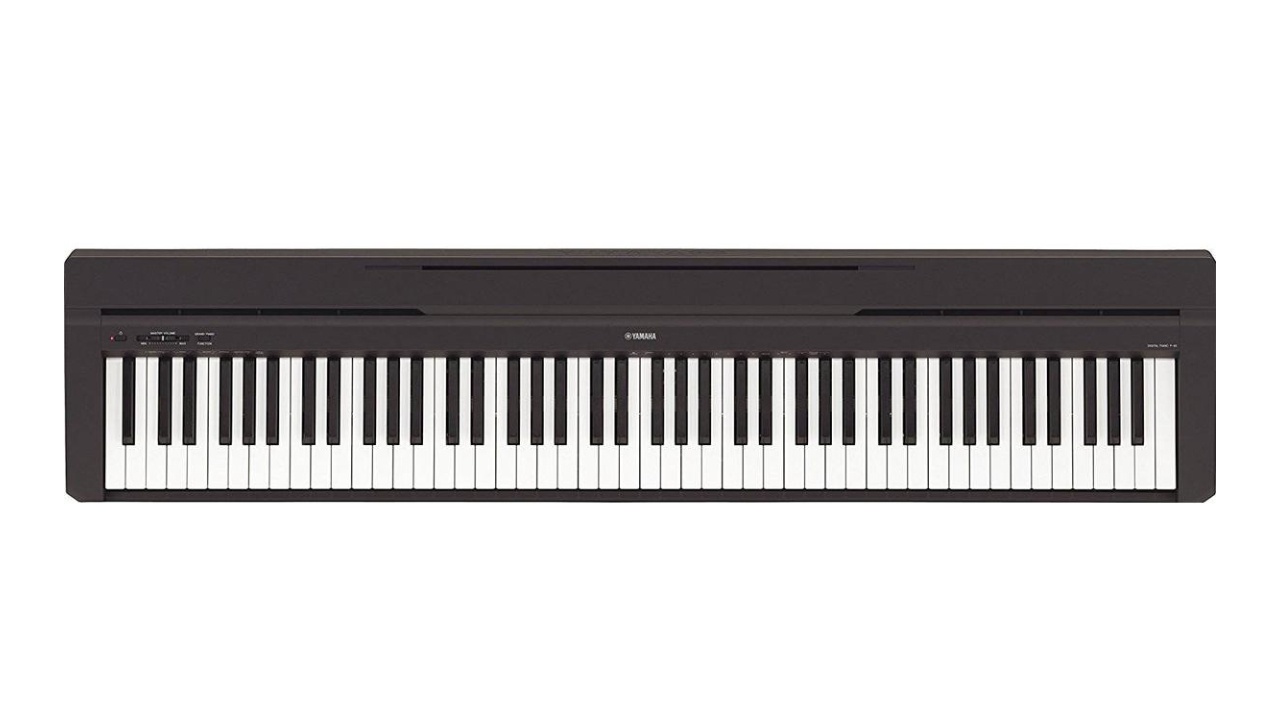MusicRadar Verdict
The Yamaha P-45 is quite possibly the most popular compact stage piano for beginners, and it’s easy to see why. With an authentic feel, fantastic sound, and Yamaha’s world-famous build quality, the P-45 is the whole package.
Pros
- +
Affordable
- +
Reliable
- +
Fantastic sounds
- +
Authentic piano feel
Cons
- -
You’ll need to upgrade the sustain pedal
- -
L-85 stand costs extra
MusicRadar's got your back
What is it?
Yamaha certainly knows a thing or two about pianos. Whether it’s first-class grand pianos, life-like digital recreations, or compact practice instruments, they are always built to the highest standards. The P-45 may be Yamaha’s entry-level point into their piano line, but it certainly doesn’t scrimp on quality.
The P-45 is a compact portable piano designed to feel as authentic to a real piano as possible. The inclusion of Yamaha’s GHS (graded hammer standard) key action offers a familiar touch, and like an acoustic piano, the weight of the keys changes as you move from the bass notes to the treble notes. This results in a very satisfying playing experience for beginners and professionals alike.
Weighing in at only 11.5kg, this compact piano is easily moved from place to place, whether that’s to piano lessons, jam sessions, or even gigs. The in-built speakers offer a rich sound on the go, while the headphone out makes it possible to practice in peace and quiet.
The Yamaha P-45 comes with a basic sustain pedal and power supply and also has the option to upgrade from a keyboard stand to a piano-style stand (L-85) to complete the elegant look.
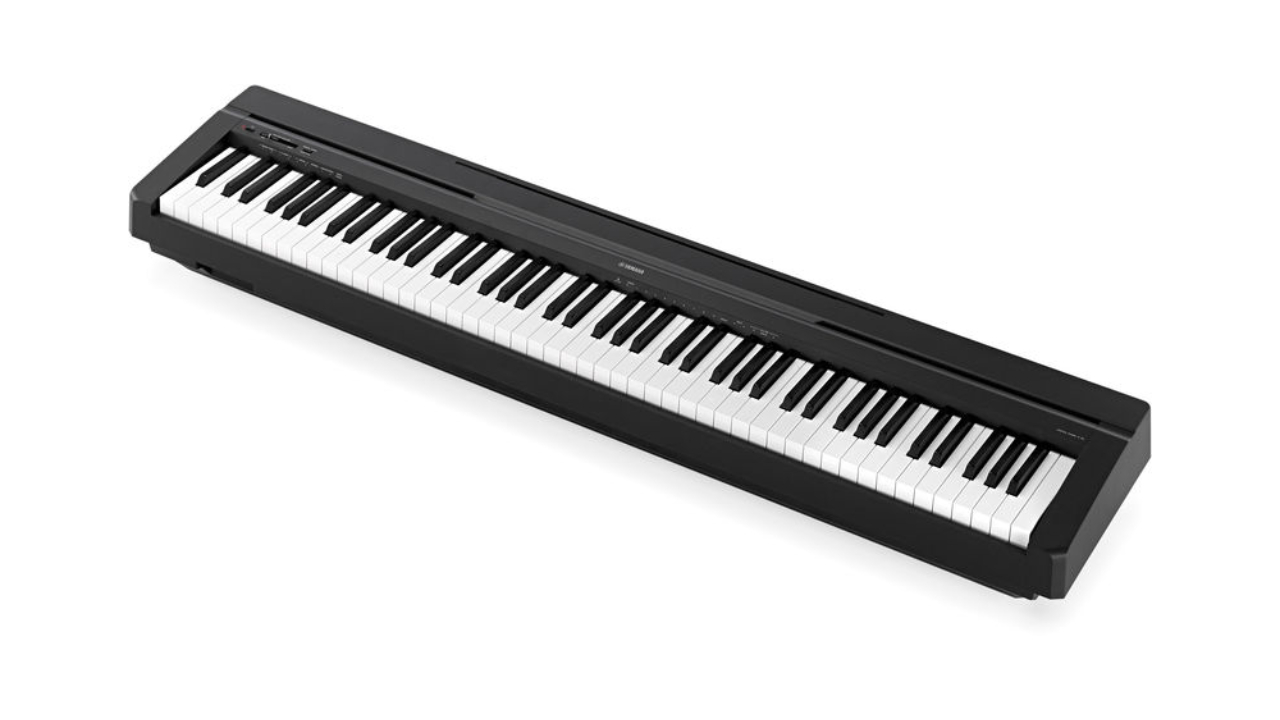
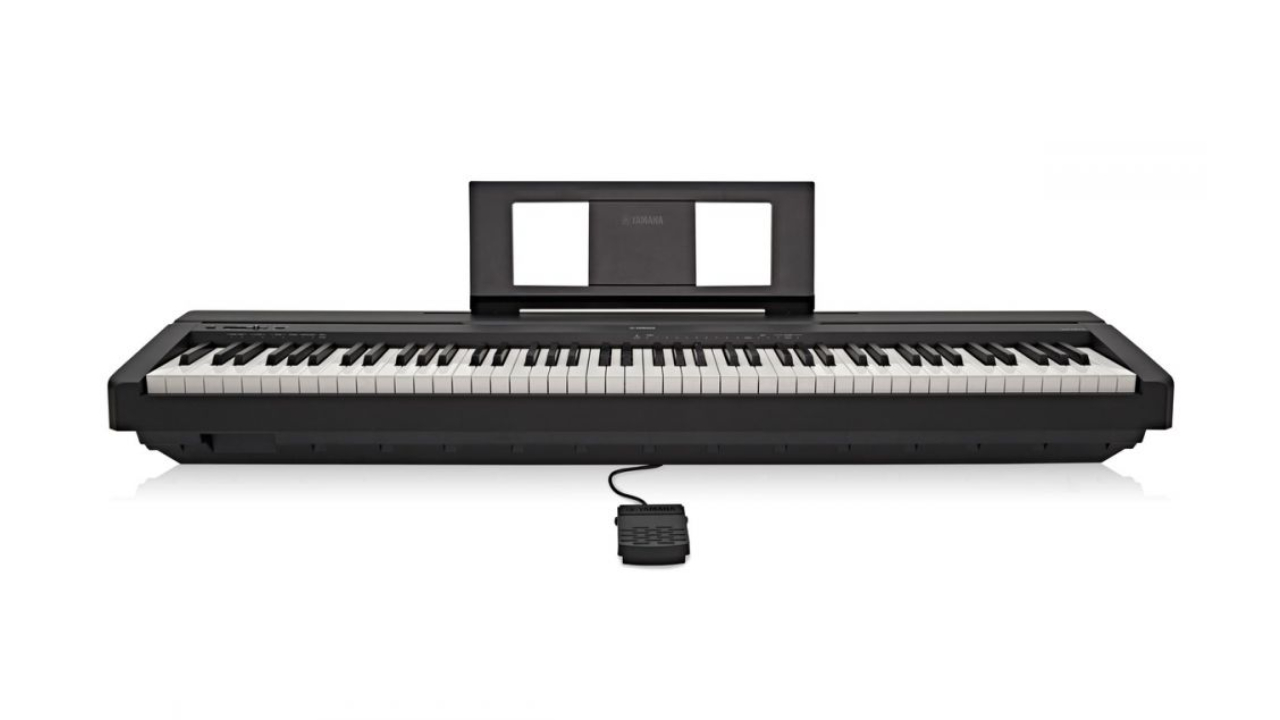

Performance & Verdict
It feels like the digital piano market is saturated with entry-level portable pianos aimed at beginners. However, the Yamaha P-45 successfully cuts through the noise, delivering a well-built, fantastic-sounding instrument perfect for the novice player or even the professional looking for a compact instrument to practice on.
The first thing that has to be said is just how solid the P-45 feels - not that we’d expect anything less from Yamaha. The main body of the piano is robust and would most definitely stand up to the stress of gigging. The quality of the keys is up there with more expensive offerings from Yamaha - albeit a little lighter in touch compared to the Clavinova range. The matte texture on the black keys is a nice touch, but the white keys can feel a little too smooth. That said, at this price point, it’s hardly a big complaint.
Overall the sounds contained within the P-45 are great - the grand piano in particular.
The graded element of the key action is pretty subtle. This isn’t something beginner players will immediately notice, but it’s a worthwhile inclusion from Yamaha. So what is a graded action? Well, simply put, this is when the low notes are weighted slightly differently from the higher ones. This mimics the way an acoustic piano behaves. These little touches all add up to a more authentic feeling instrument.
So let’s talk about the sound. Overall the sounds contained within the P-45 are great - the grand piano in particular. Although 10 voices is a lot less than some other beginner pianos on the market, each sound here is very usable. Yamaha has cleverly included sounds players actually want, meaning there are no unwanted voices you simply won’t use. The single button interface means choosing a sound is very simple, and the minimal approach leads to a sleek, uncluttered look.
A must-have for playing the piano is a sturdy sustain pedal, and while the Yamaha does come with one in the box, you can hardly call it sturdy. This rather basic pedal is a bit of a letdown as it isn’t the most responsive. Yamaha does offer an upgrade in the form of the FC4A/FC3A, and we highly recommend paying the extra and upgrading the pedal. Don’t get us wrong, the included sustain pedal will do for beginners, but you’ll soon outgrow it.
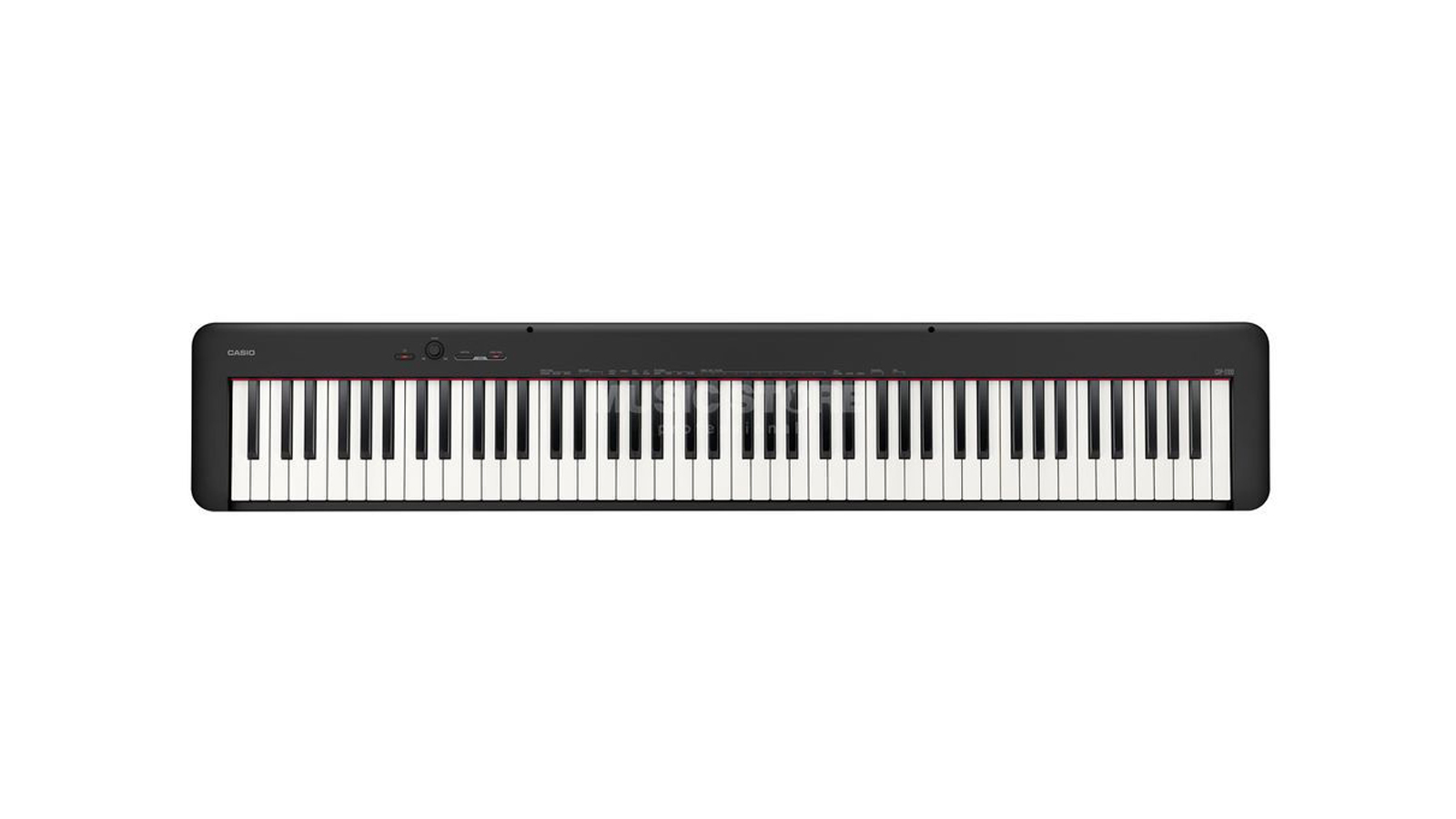
Yamaha P-125: This piano is the advanced version of the P-45, including extra voices (24) and the ability to upgrade to a full piano pedalboard.
Casio CDP S100: This compact Casio offers fantastic value for money and a stylish modern look.
On the topic of outgrowing elements of the P-45, it’s worth mentioning that it only has the ability to receive a single pedal and not the three found on larger pianos. Although you can purchase a piano-style stand for the P-45, you can’t upgrade to a full pedalboard. Its big brother - the Yamaha P-125 - does have this feature, so if you fancy having the full functionality of a piano, then it’s worth keeping this in mind.
Lastly, let’s go over the connectivity. Again, the P-45 can seem a little limited compared to others on the market. Still, we can’t help think this is by design and not simply an oversight by Yamaha. For example, as you’d expect, there is a headphone output on the back for silent practice, but this also doubles as your main out for use live. Now, while it would be nice to have a separate line out for the gigging musician, it has to be said that the P-45 is clearly designed with the beginner in mind. So for most players, the headphone output is more than enough - not to mention it helps keep the cost down.
Also located on the rear of the unit is a useful USB connection. This can be used to turn the P-45 into a powerful MIDI controller, and it’s a handy feature for any budding home producer.
So, if you’re on the lookout for a fully weighted keys piano that won’t take up too much space, and is built to last, then look no further than the Yamaha P-45. This fantastic piano may not be perfect, but at this price, it’s arguably the best on the market and won’t let you down.
- The best Yamaha P-45 deals online right now
- The best Yamaha digital pianos available today
- Looking for a keyboard? Well check out our best Yamaha keyboards guide
- Our pick of the best digital pianos for beginners
- Our pick of the best digital pianos under $1,000/£1,000
Hands-on demos
Yamaha Music Europe
Dawsons Music
Sweetwater
Specifications
- Dimensions: 1326x154x295 (mm)
- Weight: 11.5kg
- Keys: 88 Graded Hammer Standard
- Polyphony: 64
- Number of Voices: 10
- Speakers: 12 cm x 2
- Power Supply: PA-150B
- Connectivity: Headphones, Sustain Pedal, USB to Host
- Contact: Yamaha
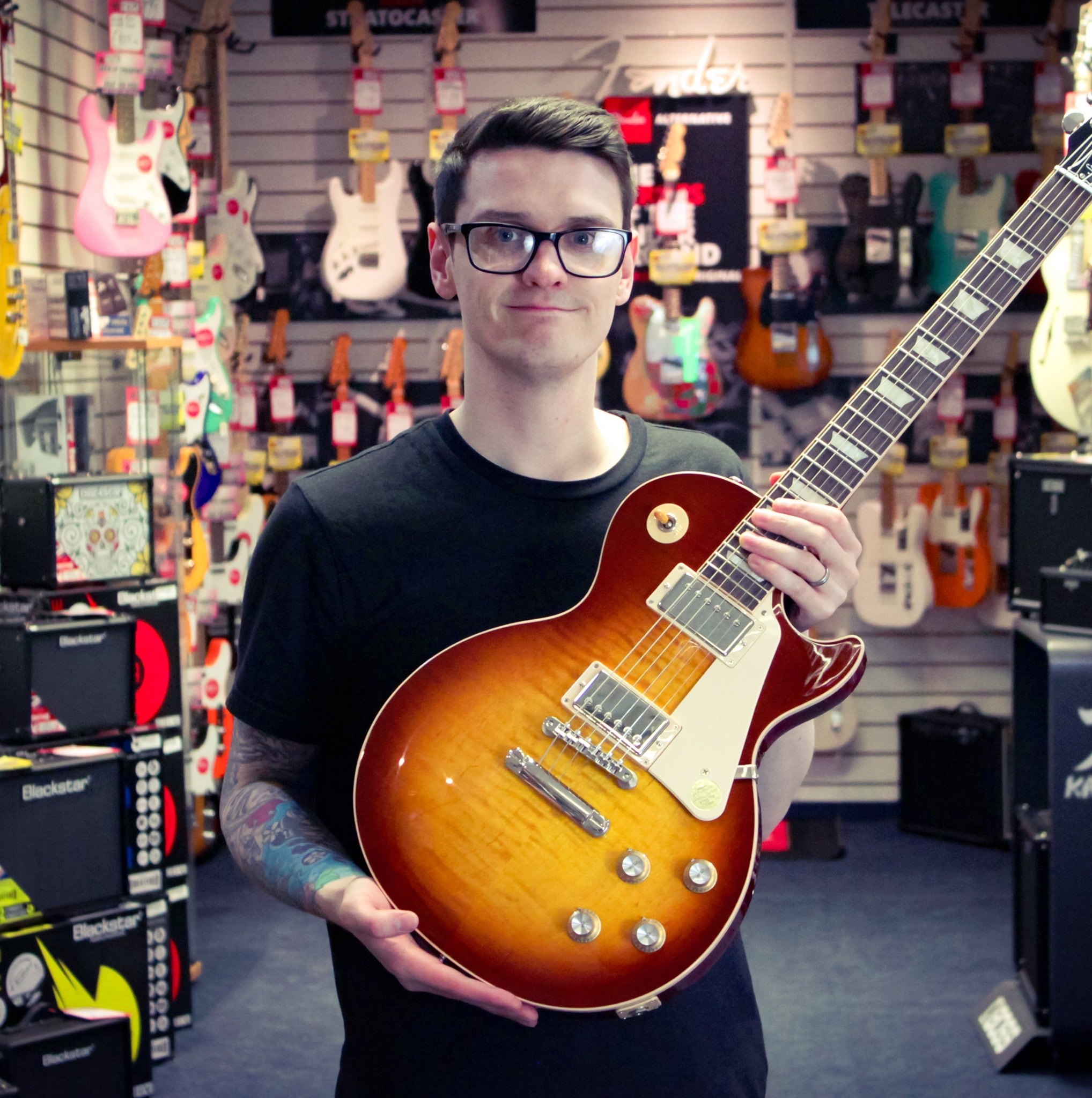
I'm a Senior Deals Writer at MusicRadar, and I'm responsible for writing and maintaining buyer's guides on the site - but that's not all I do. As part of my role, I also scour the internet for the best deals I can find on gear and get hands-on with the products for reviews. My gear reviews have been published in prominent publications, including Total Guitar and Future Music magazine, as well as Guitar World.com. I've also had the privilege of interviewing everyone from Slash to Yungblud, as well as members of Sum 41, Foo Fighters, The Offspring, Fever 333 and many more.
I have a massive passion for anything that makes a sound, particularly guitars, pianos, and recording equipment. In a previous life, I worked in music retail, giving advice on all aspects of music creation and selling everything from digital pianos to electric guitars, entire PA systems, and ukuleles. I'm also a fully qualified sound engineer who holds a first-class Bachelor's degree in Creative Sound Production from the University of Abertay and I have plenty of experience working in various venues around Scotland.
“Excels at unique modulated timbres, atonal drones and microtonal sequences that reinvent themselves each time you dare to touch the synth”: Soma Laboratories Lyra-4 review
“I used everything I knew about music”: How Green Day exceeded expectations with their most ambitious song
YouTube just added AI tools that makes musicians, library music and video editors redundant
